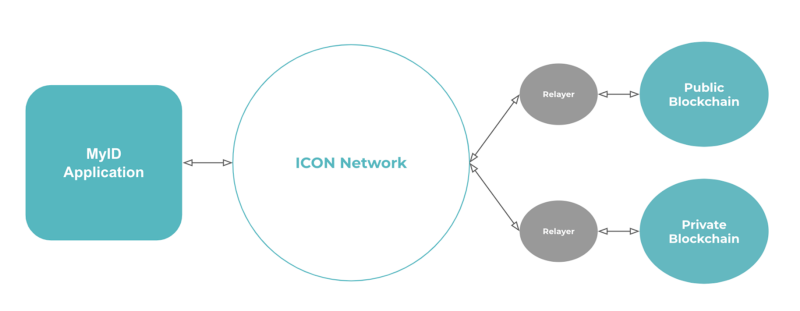ICON BTP — Everything You Want To Know
Hi ICONists🧑🚀,
About a year ago, we wrote our article about ICON’s Blockchain Transmission Protocol 1.0. Since then, a lot has changed for the Blockchain Transmission Protocol (BTP), but one thing remains the same: ICON Network’s goal to “hyper connect the world” through blockchain technology and create interoperability and thus BTP. Now, before we dive into all the different adjustments and the BTP of ICON, let’s have a look at what BTP’s are and why they’re so important.
Part 1 — What Are Blockchain Transmission Protocols?
Blockchain Transmission Protocols (BTPs) is a standard that makes it possible for heterogeneous blockchains to be interoperable. This includes blockchains that have entirely different consensus models and algorithms. The blockchains can securely anchor transactions through a universal standard as a trustless settlement layer. Additionally, BTP also facilitates transfers directly through smart contracts from one chain to another without using a central trading platform.
Furthermore, in their article, the ICON Foundation gave the example of BTP enabling data exchanges between ICONLOOP powered enterprise partners such as MyID applications.
Registered personal DID (Decentralized ID) data in the MyID application is verified on the public ICON Network, which then allows its owner to exchange messages to a public or private network that is interlinked via BTP, without having to resubmit their DID document and public key to each chain (see the image below).

This, of course, will also be possible for other apps created on the ICON Network.
Part 2 — ICON’s Blockchain Transmission Protocol
So, what makes ICON’s BTP different from other interoperability solutions? Firstly, most solutions require a game theory, slashing or other penalties for validators, PBFT consensus, critical off-chain components, or centralization. However, the Verifier contract makes the BTP different, as BTP is secured entirely through cryptography instead of any of the mentioned technologies above. That means BTP is as secure with one relay as it will be with 100 since extra relays simply ensure more reliability and liveliness.
Side note: a relay allows chains to verify events that have taken place in other chains.
But that’s not all. BTP’s infrastructure, combined with its generalized architecture, opens the door for easy integration by any third-party developer exploring other unique use cases. By implementing their Service Contract, developers can meet their development needs and submit a pull request to approve their contract. After approval, the contract will be serviced by ICON’s Relay Network and secured by BTP smart contracts.
Finally, any network added to the BTP ecosystem becomes directly connected to all other networks in the ecosystem. There is no need for bridges between networks.
How does the BTP work?
ICON’s BTP exists out of a few different components:
- First, the relay (BMR) is used to pass messages between the Message Centers.
- The Message Center Contract takes all the BTP messages on a given network.
- The Verifier Contract (BMV) verifies the messages sent to the Message Center by Relays.
- Service Contract (BSH) holds application-specific logic such as the information about a token transfer.
So, with all these components, how does it work? Let’s say you send 10 ICX to the Service Contract on ICON; a gas fee will be deducted from the 10 ICX you sent (which go to the Fee Aggregation Contract). Then, the Service Contract locks the other ICX and sends a message to the Message Center on ICON.
The Relay reads the message and sends it to the Message Center on the parachain. The Message Center on the parachain then sends the message to the Verifier Contract (also on the parachain), and the Verifier contract either approves or rejects the message.
If the message is approved, the message will be forwarded to the Service Contract on the parachain. The Service Contract will mint the parachain-based wrapped ICX and send it to your parachain wallet.
BTP security is utterly reliant on smart contracts since, in essence, it consists of three different types of smart contracts on each connected network with a relay passing information between them. The security of the relayed information is, therefore, as secure as the two connected blockchains.
Polkadot BTP Integration
Recently, the ICON BTP working group announced its integration with the well-known PoS network Polkadot. Acala, Moonbeam, Edgeware, and Plasm, four parachain candidates in the Polkadot ecosystem, will be integrated into ICON’s BTP interoperability solution, enabling developers to build complex applications tapping into different blockchain infrastructures.
The immediate first use case that is envisioned is a vibrant cross-chain DeFi ecosystem between ICON’s DeFi products and all four Polkadot parachains. The focus will be on ICON DeFi DApps such as Balanced and Omm. finance as they will be able to add tokens from the parachains to their products easily.
- ✅ For the full article on the announcement, click here.
We are excited to see what other use-cases for this integration will be and are happy to be a part of the ICON Network.
DISCLAIMER: This is not financial advice. Staking, delegation, and cryptocurrencies involve a high degree of risk, and there is always the possibility of loss, including the failure of all staked digital assets. Additionally, delegators are at risk of slashing in case of security or liveness faults on some protocols. We advise you to do your due diligence before choosing a validator.


Join the conversation